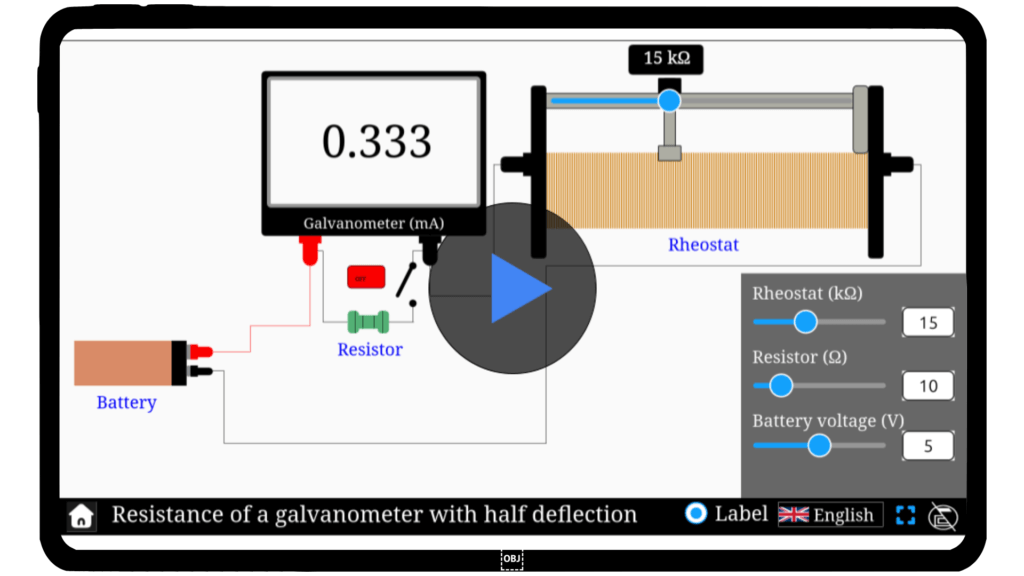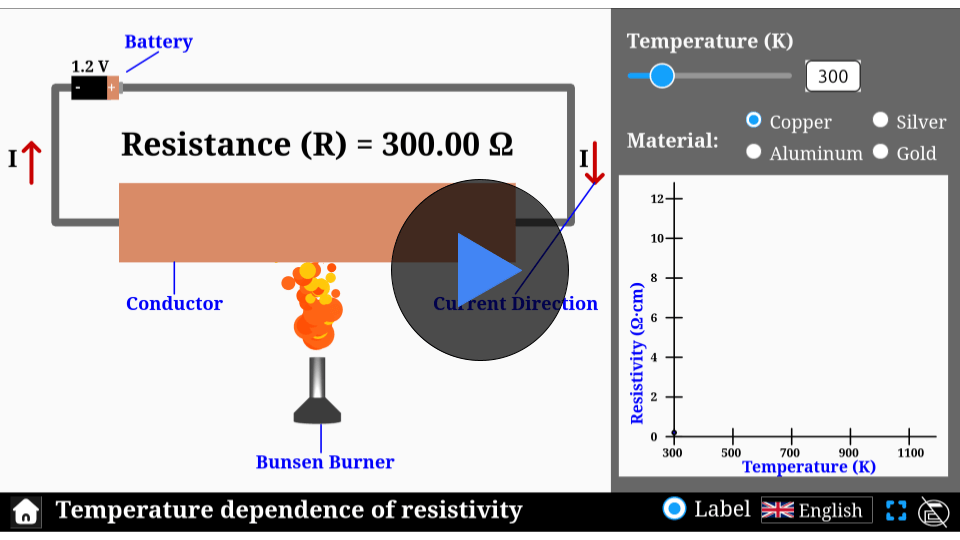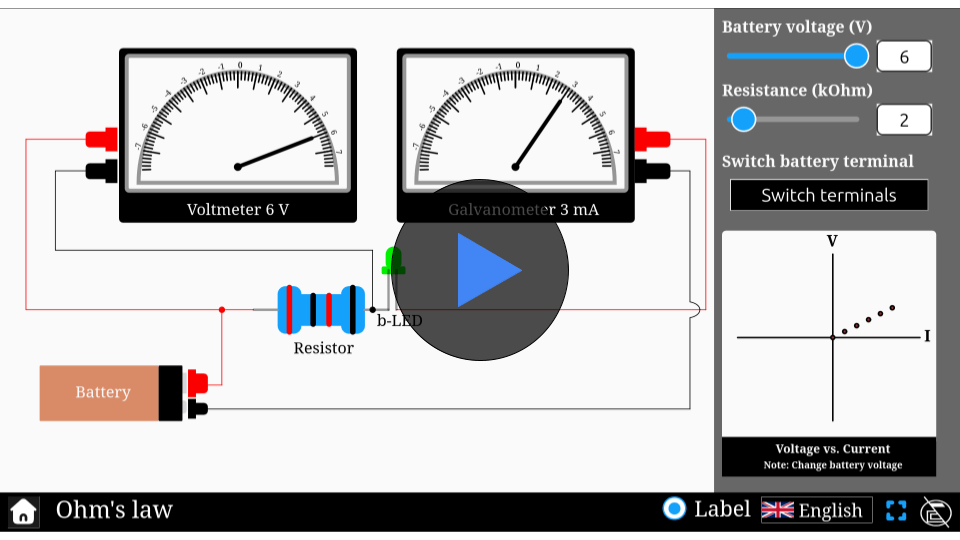Resistance of a galvanometer with half deflection simulator
Explore the resistance of a galvanometer interactively: learn how to measure resistance using the half-deflection method with our engaging simulator.
Resistance of a galvanometer with half deflection
Ever wonder how sensitive electrical instruments are calibrated for precise measurements? The half deflection method holds the key! This ingenious technique, used to measure the resistance of a galvanometer, is vital for both scientific research and practical applications like fine-tuning electronic circuits. Dive into our interactive simulator to adjust parameters like battery voltage and resistors, and see how they influence the deflection. Experiment with different values to uncover the secrets of accurate electrical measurement and explore the science that powers modern technology. Start your journey into precision today!
\(G = \frac{RS}{R-S}\)
Mathematical description
Formula relates the galvanometer resistance with resistance of rheostat and shunt resistance.
where:
- \( R \) is the resistance of the rheostat
- \( S \) is the shunt resistance
- \( G \) is the resistance of galvanometer
Simulator
Discover the half deflection method to measure galvanometer resistance with our interactive simulator!
Interactive Physics Simulator – Galvanometer Resistance by Half-Deflection
🌟 You May Also Like
Suggested experiments and activities based on your progress...
FAQs on Resistance of a galvanometer with half deflection
Qus 1. What is the half-deflection method?
Half-deflection method is an experiment to find the resistance of a galvanometer by connecting a known resistance in parallel and adjusting it until the deflection is halved.
Qus 2. What is the principle behind the half-deflection method?
When the galvanometer deflection is reduced to half, the value of the shunt resistance equals the resistance of the galvanometer (G).
Qus 3. What are the practical steps involved in the experiment?
The objective is to adjust the shunt resistance to achieve half the galvanometer deflection compared to the deflection when no shunt is connected. By using the known rheostat resistance and the shunt resistance, you can then calculate the resistance of the galvanometer.
Qus 4. How will you use a galvanometer for measuring current?
To measure current galvanometer should be connected in series with the circuit. A galvanometer is designed to typically measure current in microampere or milliampere range. However, for larger currents, a shunt resistance is used in parallel with the galvanometer to protect it from excessive current and to extend its range.
Qus 5. In the half-deflection experiment, why is the shunt resistance connected in parallel with the galvanometer instead of in series?
In the half-deflection experiment, the shunt resistance is connected in parallel with the galvanometer to enable current division. When the current through the galvanometer reduces to half of its initial value, it indicates that the shunt resistance is equal to the resistance of the galvanometer.
If the resistor were connected in series instead, the same current would flow through the galvanometer, and the deflection would decrease only due to an overall reduction in current—not due to current splitting. That would defeat the purpose of the experiment.
Qus 6. What are the factors on which sensitivity of a galvanometer depends?
The sensitivity of a galvanometer depends on several factors, including:
Number of turns in the Coil: The sensitivity of a galvanometer increases with the number of turns in its coil. More turns create a greater magnetic field for the same current, making the device more sensitive to small currents.
Strength of the Magnetic Field: A stronger magnetic field increases the deflection of the galvanometer’s needle for a given current, thereby improving sensitivity. This is typically achieved by using stronger magnets or improving the design of the coil and magnet arrangement.
Area of the Coil: The larger the area of the coil, the greater the interaction with the magnetic field, which increases the sensitivity. Larger coils produce more torque for the same current, enhancing the deflection.
Spring Constant: The sensitivity is also influenced by the spring constant that controls the return of the needle. A softer spring allows more deflection for the same current, thus increasing sensitivity.
Damping: The damping effect (usually from air or fluid resistance) should be minimal to avoid reducing the deflection and precision. Overdamping can decrease sensitivity by limiting how much the needle moves.
Internal Resistance: The internal resistance of the galvanometer also plays a role. Lower resistance means less voltage is needed for the same current, potentially increasing sensitivity, but too low resistance can result in high current sensitivity which may damage the device.




